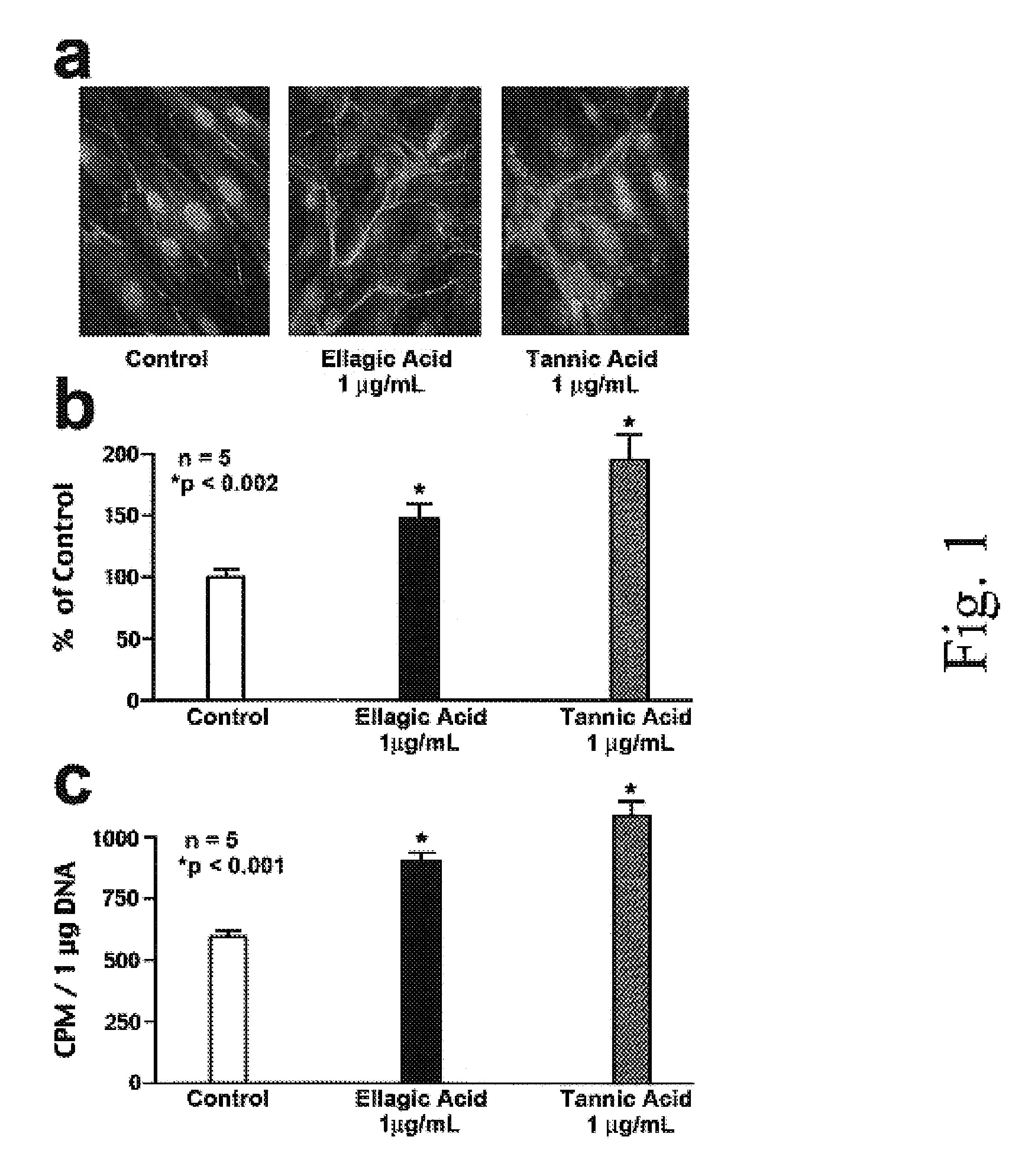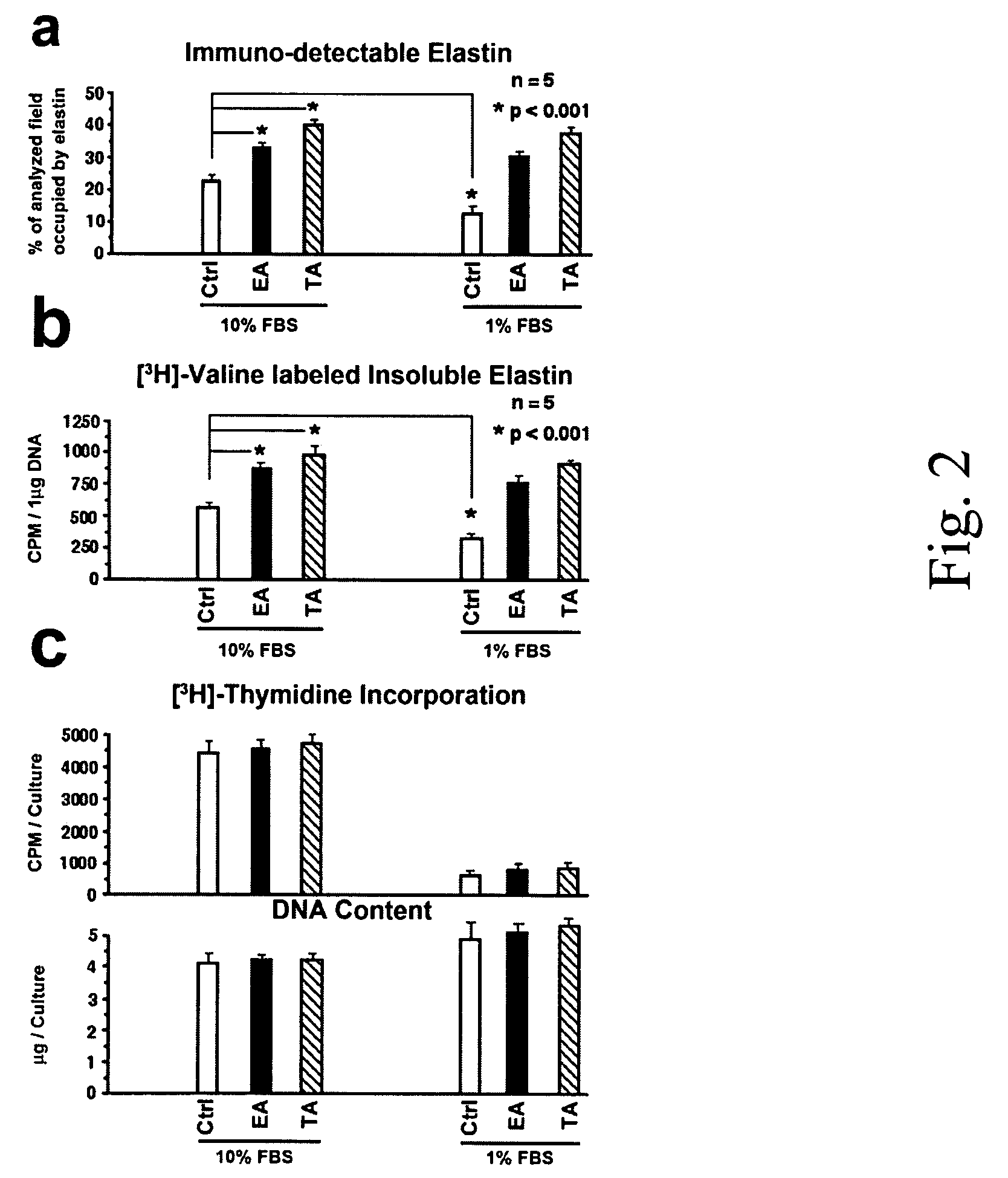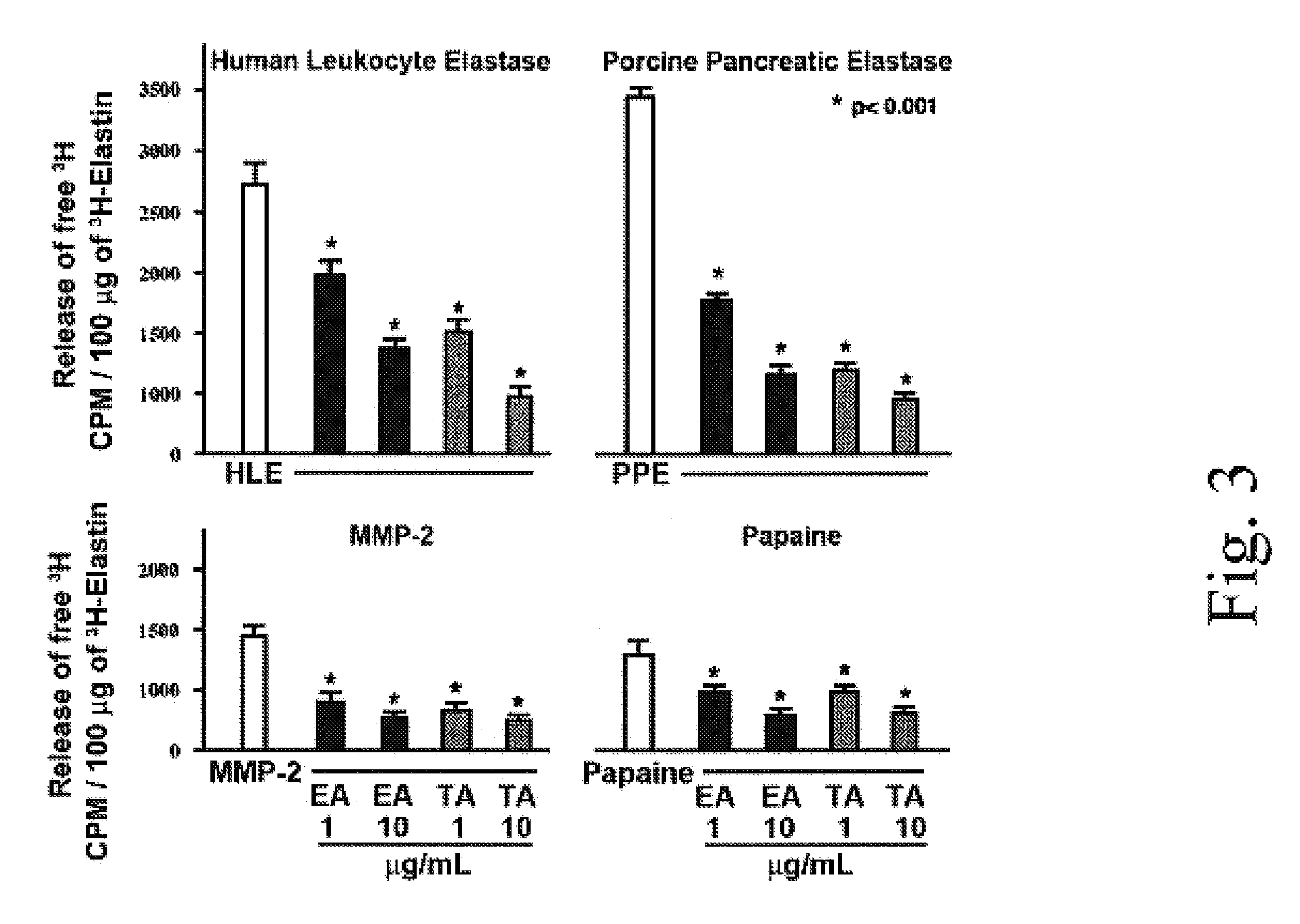Elastin protective polyphenolics and methods of using the same
a technology of elastin and polyphenols, applied in the field of elastin protective polyphenolics and methods, can solve the problems of loss of physiologically relevant elastic fibers, inability to replace damaged, and insufficient efficiency of elastogenic process, so as to prevent premature proteolysis and improve elastogenesis
- Summary
- Abstract
- Description
- Claims
- Application Information
AI Technical Summary
Benefits of technology
Problems solved by technology
Method used
Image
Examples
example 1
[0080]Materials. All chemical-grade reagents were obtained from Sigma (St. Louis, Mo.). αMEM medium, fetal bovine serum (FBS), 0.2% trypsine-0.02% EDTA and other cell culture products were obtained from GIBCO Life Technologies (Burlington, Canada). Polyclonal antibody to tropoelastin and BA4 monoclonal antibody to VGVAPG (SEQ ID NO. 1) were purchased from Elastin Products Company, Inc. (Owensville, Mo.). Monospecific polyclonal anti-AKAAAKAAAKA antibody was a gift of Dr. Barry Starcher from the University of Texas. Secondary antibody fluorescein-conjugated goat anti-rabbit (GAR-FITC) was purchased from Sigma (St. Louis, Mo.). DNeasy Tissue system for DNA assay and Rneasy Mini Kit for isolation of total RNA were purchased from Qiagen (Mississauga, Canada). Expression probe for elastin was purchased from Applied Biosystems (Foster City, Calif.). The radiolabeled reagents, [3H]-valine, and [3H]-thymidine were purchased from Amersham Canada Ltd. (Oakville, Canada).
[0081]Cell Cultures. B...
example 2
[0104]In order to directly prove that tannic acid also binds to collagen type 1, triplicate (1 mg) aliquots of pure collagen type I were incubated with 20 μg / ml of TA for 2 h at 37° C. The initial concentration of tannic acid was confirmed by direct spectrophotometric reading at 280 nm. This method adopted from Gori et al. demonstrated a dose-dependent linear increase in absorbance. At the end of incubation period the collagen type I slurries were separated by centrifugation and the concentration of tannic acid in supernatants were spectrophotometrically determined again at 280 nm. In each experimental group means±SD were calculated and obtained values were statistically compared with beginning concentrations of both polyphenols.
[0105]Results. As shown in FIG. 5, the binding studies demonstrate that 1 mg of collagen type I (from rat tail) sequestered 75.5±0.001% (P<0.0001) of the tannic acid (originally 20 μg / mL) from solution, suggesting that tannic acid may also bind to collagen t...
PUM
| Property | Measurement | Unit |
|---|---|---|
| concentration | aaaaa | aaaaa |
| concentration | aaaaa | aaaaa |
| thickness | aaaaa | aaaaa |
Abstract
Description
Claims
Application Information
 Login to View More
Login to View More - R&D
- Intellectual Property
- Life Sciences
- Materials
- Tech Scout
- Unparalleled Data Quality
- Higher Quality Content
- 60% Fewer Hallucinations
Browse by: Latest US Patents, China's latest patents, Technical Efficacy Thesaurus, Application Domain, Technology Topic, Popular Technical Reports.
© 2025 PatSnap. All rights reserved.Legal|Privacy policy|Modern Slavery Act Transparency Statement|Sitemap|About US| Contact US: help@patsnap.com



